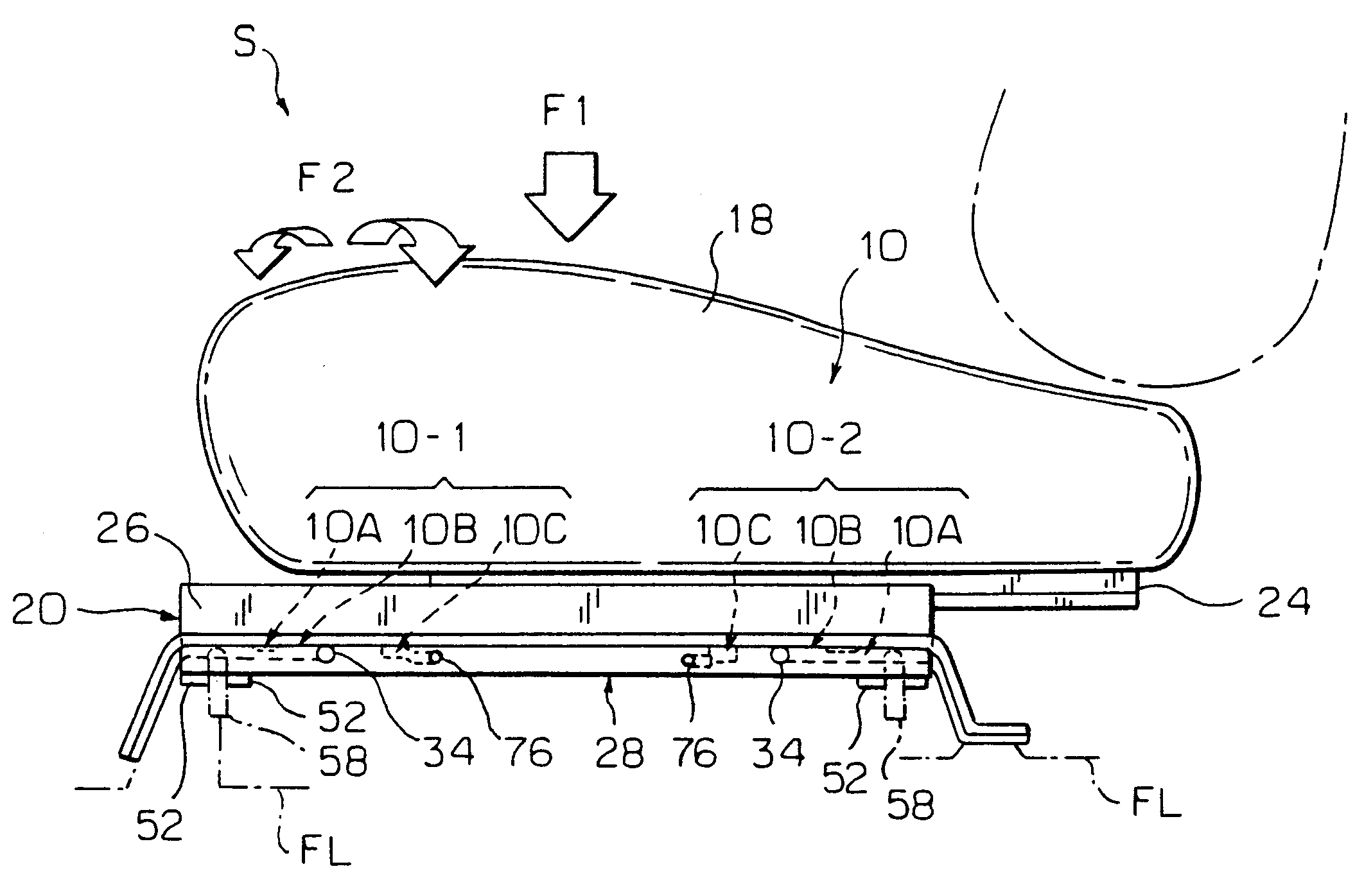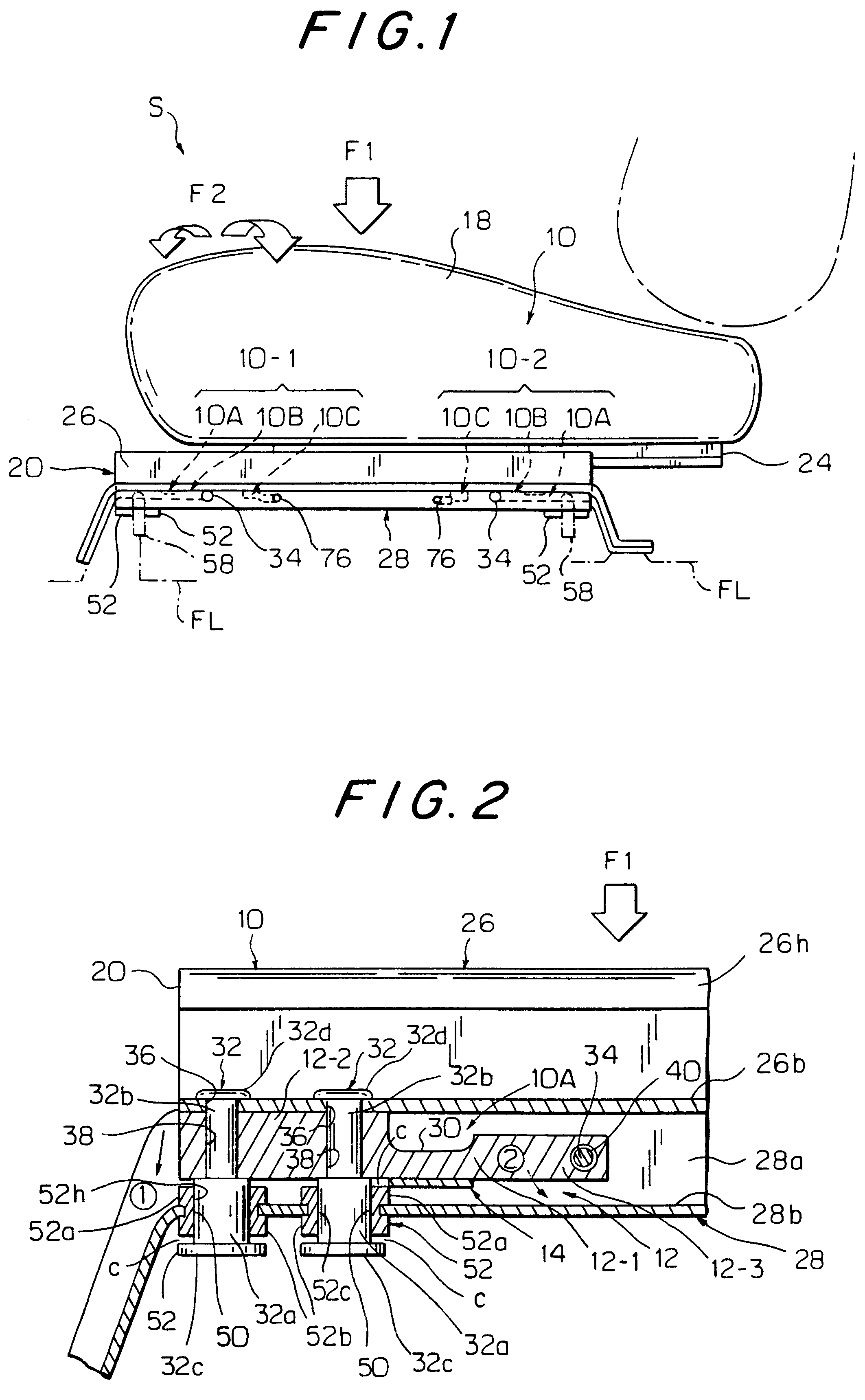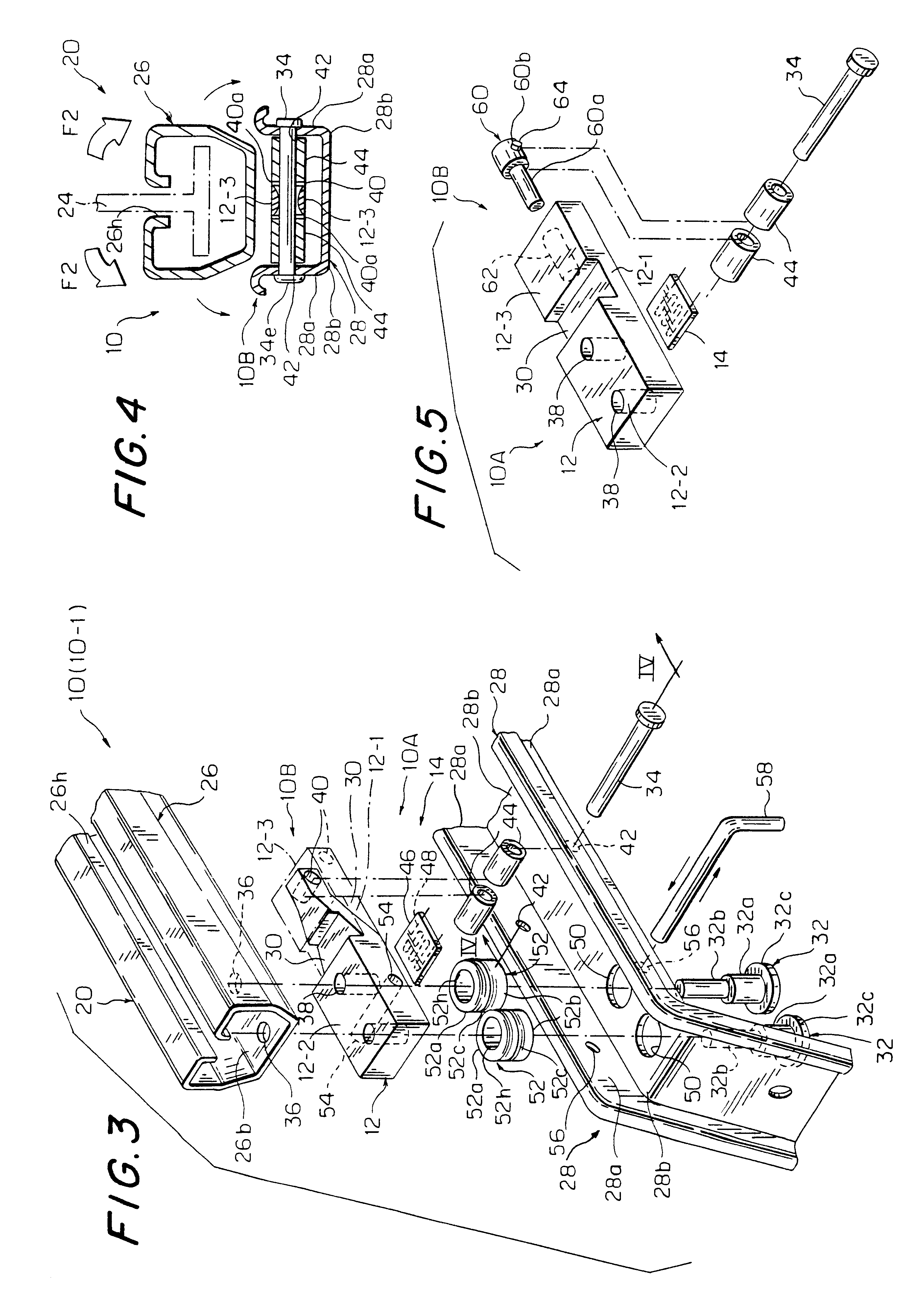Load detection structure for vehicle seat
a technology for vehicle seats and loading detection, applied in the direction of chairs, tractors, instruments, etc., can solve the problems of increasing the weight of the seat, and the prior art is neither realistic nor practical in assembling an optimal mechanical structur
- Summary
- Abstract
- Description
- Claims
- Application Information
AI Technical Summary
Benefits of technology
Problems solved by technology
Method used
Image
Examples
Embodiment Construction
Referring to FIGS. 1 through 12, there is illustrated one preferred mode of load detection structure applicable to a vehicle seat in accordance with the present invention. Reference is first made to FIG. 1 in which designations (10) each generally represents a load detection structure provided between a slide rail device (20) and a support leg member (28) in a novel simplified manner with various structural features, which is a main novel aspect of the present invention as will be described. Also, as will be elaborated later, as far as the illustrated embodiment is concerned, the load detection structure (10) may preferably be embodied by a load detection means (10A) for detecting an amount of vertically applied downward load (F1) (i.e. a weight of an occupant on a seat (S)); a twist prevention means (10B) for preventing the load detection means (10A) from being twisted by laterally applied load (F2) (i.e. a leftward or rightward applied load or force); and an auxiliary linkage mean...
PUM
| Property | Measurement | Unit |
|---|---|---|
| diameter | aaaaa | aaaaa |
| elastic | aaaaa | aaaaa |
| displacement | aaaaa | aaaaa |
Abstract
Description
Claims
Application Information
 Login to View More
Login to View More - R&D
- Intellectual Property
- Life Sciences
- Materials
- Tech Scout
- Unparalleled Data Quality
- Higher Quality Content
- 60% Fewer Hallucinations
Browse by: Latest US Patents, China's latest patents, Technical Efficacy Thesaurus, Application Domain, Technology Topic, Popular Technical Reports.
© 2025 PatSnap. All rights reserved.Legal|Privacy policy|Modern Slavery Act Transparency Statement|Sitemap|About US| Contact US: help@patsnap.com



